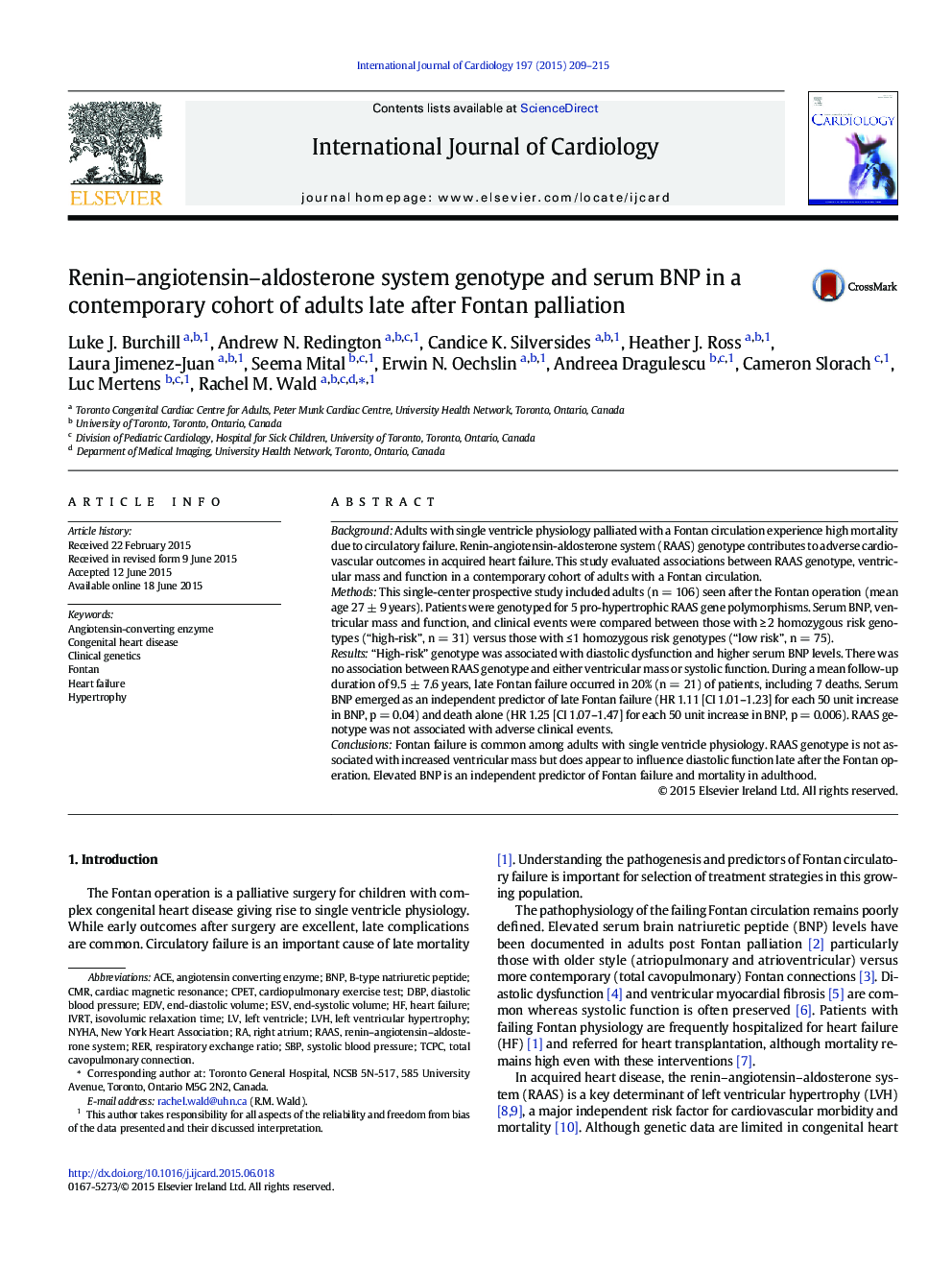| Article ID | Journal | Published Year | Pages | File Type |
|---|---|---|---|---|
| 2928917 | International Journal of Cardiology | 2015 | 7 Pages |
BackgroundAdults with single ventricle physiology palliated with a Fontan circulation experience high mortality due to circulatory failure. Renin-angiotensin-aldosterone system (RAAS) genotype contributes to adverse cardiovascular outcomes in acquired heart failure. This study evaluated associations between RAAS genotype, ventricular mass and function in a contemporary cohort of adults with a Fontan circulation.MethodsThis single-center prospective study included adults (n = 106) seen after the Fontan operation (mean age 27 ± 9 years). Patients were genotyped for 5 pro-hypertrophic RAAS gene polymorphisms. Serum BNP, ventricular mass and function, and clinical events were compared between those with ≥ 2 homozygous risk genotypes (“high-risk”, n = 31) versus those with ≤ 1 homozygous risk genotypes (“low risk”, n = 75).Results“High-risk” genotype was associated with diastolic dysfunction and higher serum BNP levels. There was no association between RAAS genotype and either ventricular mass or systolic function. During a mean follow-up duration of 9.5 ± 7.6 years, late Fontan failure occurred in 20% (n = 21) of patients, including 7 deaths. Serum BNP emerged as an independent predictor of late Fontan failure (HR 1.11 [CI 1.01–1.23] for each 50 unit increase in BNP, p = 0.04) and death alone (HR 1.25 [CI 1.07–1.47] for each 50 unit increase in BNP, p = 0.006). RAAS genotype was not associated with adverse clinical events.ConclusionsFontan failure is common among adults with single ventricle physiology. RAAS genotype is not associated with increased ventricular mass but does appear to influence diastolic function late after the Fontan operation. Elevated BNP is an independent predictor of Fontan failure and mortality in adulthood.
